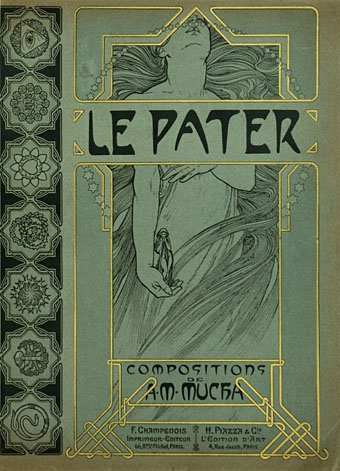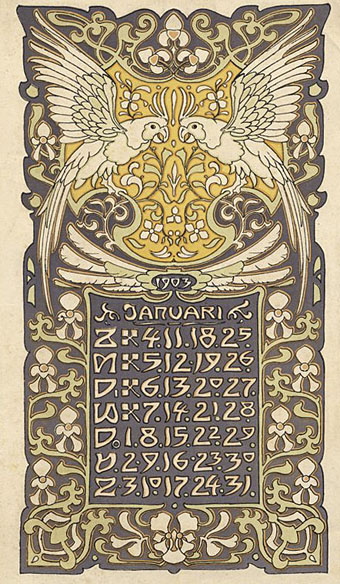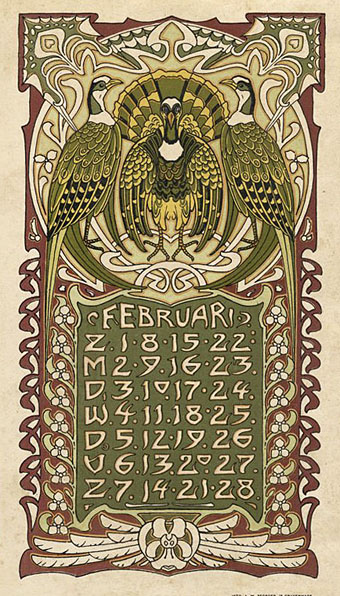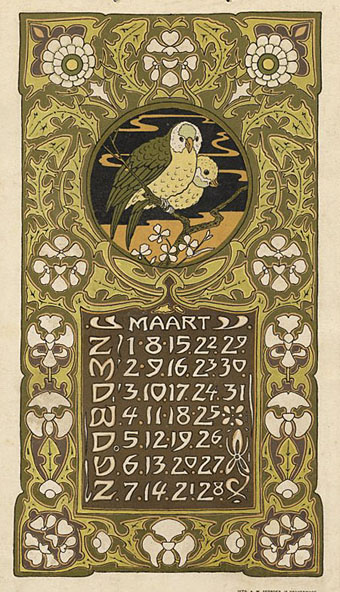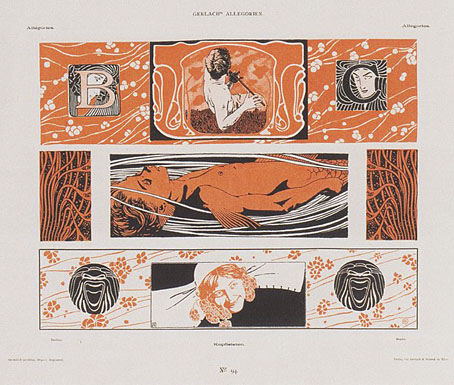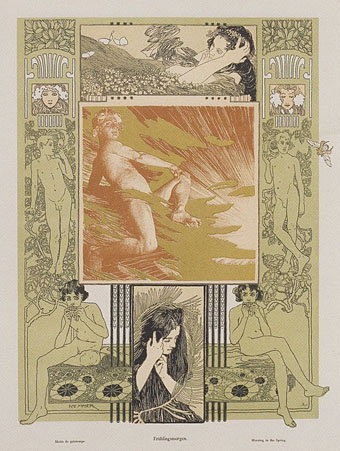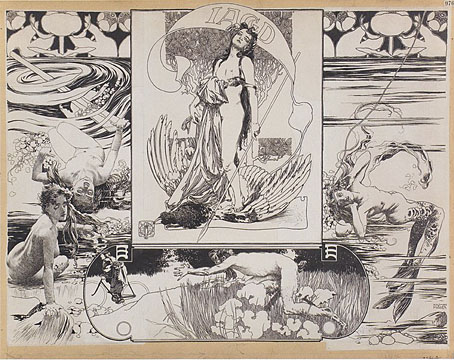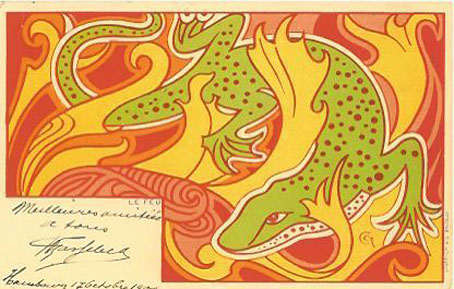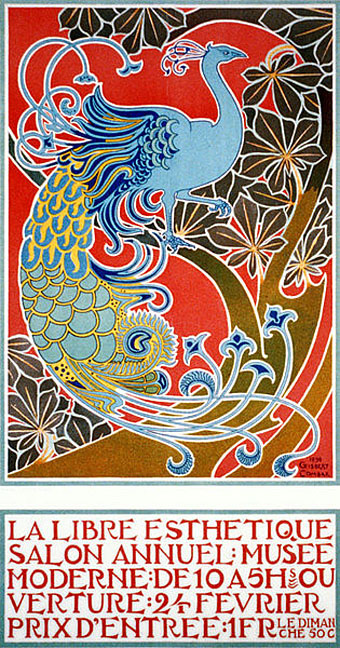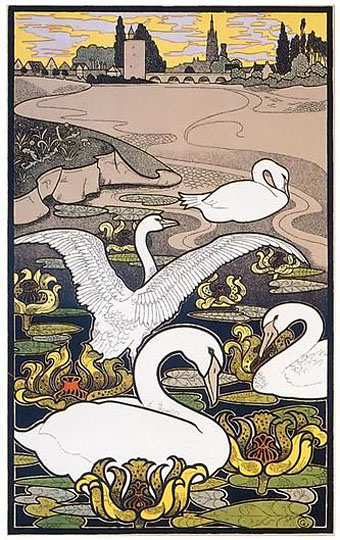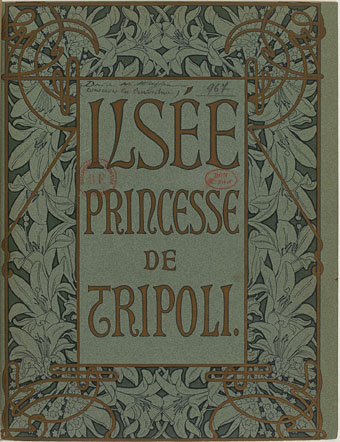
One of the recent weekend posts linked to a Kickstarter page for a reprinting of Le Pater, one of several books designed and illustrated by Alphonse Mucha. Two years before Le Pater Mucha had created an equally sumptuous volume, Ilsée, Princesse de Tripoli. The Mucha Foundation describes the book thus:
Based on Edmond Rostand’s La Princesse Lointaine, written for Sarah Bernhardt in 1895, L’Ilsée, Princesse de Tripoli was commissioned from the author Robert de Flers by the Parisian publisher Henri Piazza.
By the time De Flers had completed his manuscript, Mucha had only three months to prepare 134 coloured lithographs before the edition was due to go to print. (more)
I’ve often wondered how Mucha managed to create so many posters and other designs—never mind books—in a short space of time, even if he used assistants now and then. Judging by this example he could work fast without diminishing his flair or invention. The pages here are from Gallica where the scans seem to be improving in quality. The whole of Ilsée, Princesse de Tripoli is available for viewing or downloading, as is their copy of Le Pater and many other Mucha prints and illustrations.
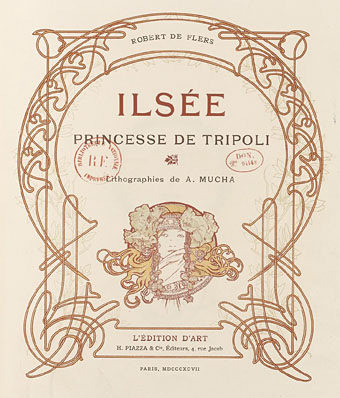
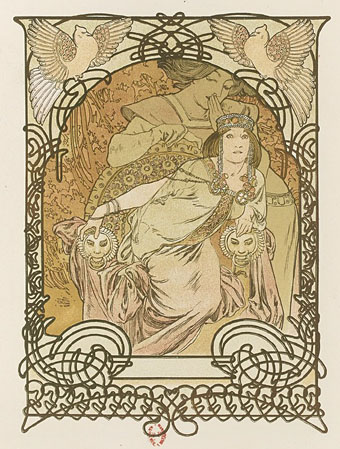
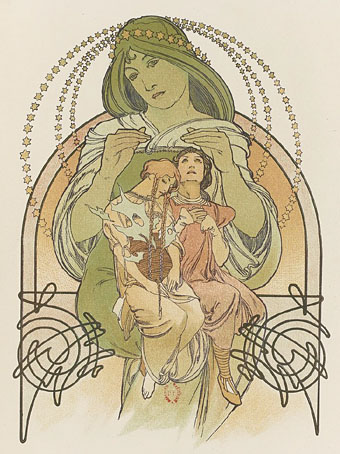
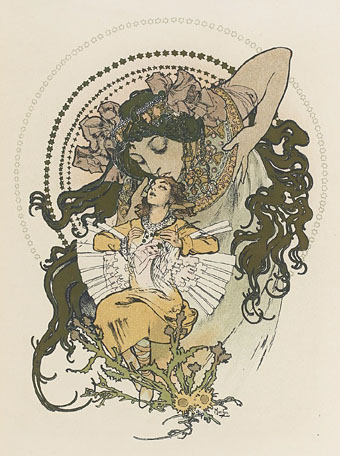
Previously on { feuilleton }
• Alphonse Mucha record covers
• Combinaisons Ornementales

